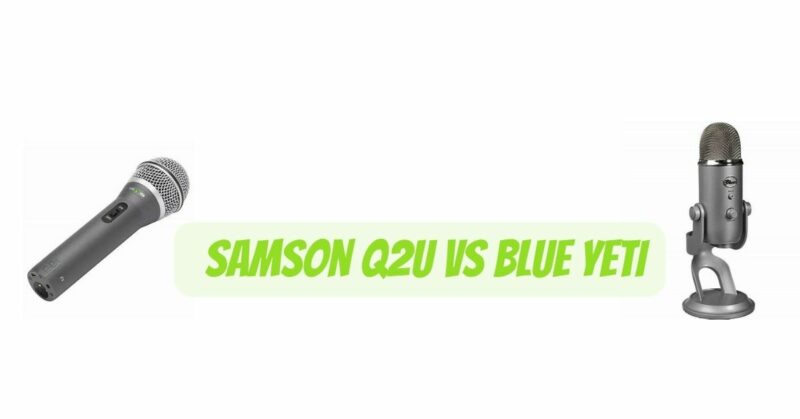USB microphones have revolutionized the way we record audio, offering convenience and simplicity without sacrificing quality. In this article, we will compare two popular USB microphones: the Samson Q2U and the Blue Yeti. Both models have gained a reputation for their versatility and performance, making them popular choices for podcasting, streaming, voiceovers, and other recording applications. We will explore their design, sound quality, features, and other key factors to help you choose the microphone that best suits your needs.
Design and Build Quality
The Samson Q2U and Blue Yeti differ in their design and build quality. The Q2U features a handheld dynamic microphone design, providing a solid and durable construction that can withstand rigorous use. It also includes a desktop tripod stand and a swivel mount for easy positioning. The Blue Yeti, on the other hand, boasts a distinctive retro-inspired look with a larger form factor. It features a robust metal construction and an adjustable stand for versatile positioning options. Both microphones offer built-in headphone jacks for real-time monitoring.
Sound Quality
Sound quality is paramount when choosing a microphone. The Samson Q2U utilizes a dynamic microphone capsule, which excels at reducing background noise and handling loud sound sources, making it suitable for podcasting and recording in less controlled environments. It delivers a warm and rich sound with good clarity. The Blue Yeti, in contrast, features a condenser microphone capsule that offers a more detailed and sensitive sound capture. It provides a wider frequency response, capturing a broader range of nuances and producing a more precise and transparent sound.
Polar Patterns and Recording Flexibility
Polar patterns determine the microphone’s sensitivity to sound from different directions, allowing for versatile recording options. The Samson Q2U offers both cardioid and omnidirectional polar patterns. The cardioid pattern focuses on capturing sound from the front while minimizing background noise, making it ideal for individual recordings. The omnidirectional pattern captures sound from all directions, making it suitable for group discussions or capturing ambient sound. The Blue Yeti, in addition to cardioid, offers three additional polar patterns: omnidirectional, bidirectional, and stereo. This versatility allows for various recording scenarios, including interviews, conference calls, and stereo instrument recordings.
Connectivity and Compatibility
Both the Samson Q2U and Blue Yeti are USB microphones, providing easy plug-and-play connectivity with computers and other devices. The Q2U also includes an XLR output, allowing for additional flexibility when connecting to professional audio interfaces or mixers. The Blue Yeti, on the other hand, features multiple connection options, including USB and headphone monitoring ports, making it compatible with a wide range of devices.
Price Considerations
Price is an important factor to consider. The Samson Q2U generally falls within a more affordable price range, offering great value for its performance and versatility. It is a popular choice for beginners and budget-conscious users. The Blue Yeti, being a more established and feature-rich microphone, is positioned at a slightly higher price point, reflecting its advanced capabilities and build quality.
Conclusion
Both the Samson Q2U and Blue Yeti USB microphones offer impressive performance and versatility for various recording applications. The Q2U’s dynamic microphone design and dual polar patterns make it suitable for podcasting and recording in different environments. The Blue Yeti, with its condenser microphone capsule and multiple polar patterns, offers a more detailed and transparent sound capture, catering to a broader range of recording scenarios. Consider your specific recording needs, budget, and desired sound characteristics to choose the microphone that best fits your requirements. Whether you opt for the Samson Q2U or Blue Yeti, you can expect reliable and high-quality audio capture for your projects.


